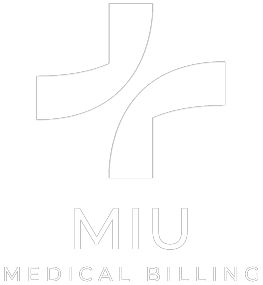Introduction
What is Insurance Credentialing?

Insurance credentialing can be understood as establishing whether or not a particular healthcare provider can provide services for which he or she will be paid through insurance. Thus, they will be able to meet the standards that an insurance carrier requires of their professionals.
Why Credentialing Matters
Credentialing is a necessary process that enables therapists and other providers to diversify their clientele, obtain additional clients whose insurance policies will be reimbursed by insurance companies, and increase their reputation in the medical field.
Section 1: Understanding Insurance Credentialing
What is Insurance Credentialing?
Insurance credentialing is a process where insurance organizations check various details of a provider, including education and professional licenses, certificates, etc. This process can help guarantee that insurance providers can rely on providers to provide good healthcare services to their clientele.
Why Credentialing with Insurance is Important to Therapists
Credentialing becomes essential for therapists to get the ability to conduct their practices under insurance reimbursement to make services affordable for patients. Evaluates patients, intensifies the flow of clients, and markets therapists as experts in the field.
Insurance Credentialing: The Different Insurance Credentialing Types
- Health Insurance Credentialing: Targeting primary care physicians and mental health practitioners, and transmitting information through social networks and relevant personnel who work in bridge clinics for children with ADHD.
- Dental Insurance Credentialing: Designed for dentists with the specific intent of satisfying the guidelines set down by most dental insurance carriers.
Section 2: How to Get Credentialed with Insurance Companies
Steps of Credentialing:
Gather Necessary Documentation:
Employ licenses, certifications, malpractice insurance, and the last CAQH profile update.
Understand Payer Requirements:
Specified guidelines vary for the major insurance carriers; therefore, there is a need to research their policies.
Submit Applications:
Application has to be made to state databases such as the Common Agreement for Multiple Purposes (CAQH) National Plan and Provider Enumeration System (NPPES) or insurance companies.
Verification Process:
Insurance companies check your documents, which takes about 60 to 120 days.
Approval and Contracting:
Approval, review, and signing of contracts make preparations to commence billing insurance.
Section 3: How to Get Credentialed with Insurance as a Therapist
Special Considerations for Therapists
Therapists also have specific considerations that ought to be taken into consideration during the therapy of patients.
Navigating the Credentialing Process for Therapists
- Emphasize specializations like trauma therapy or CBT during applications.
- Stay updated on behavioral health insurance network requirements.
- Maintain compliance by renewing licenses and meeting continuing education requirements.
Section 4: Insurance Credentialing Specialists: Who Are They & Why Do You Need One?
Role of an Insurance Credentialing Specialist
An insurance credentialing specialist manages the paperwork, submission of the applications, and follow-ups with insurance companies, ensuring an efficient credentialing process.
Benefits of Hiring an Expert
- Saves time
- Reduces errors in applications.
- Speeds up approval timelines.
- Handles communication with insurance carriers, allowing providers to focus on patient care.
Section 5: The Cost of Credentialing with Insurance Companies
What Are the Costs Involved in Insurance Credentialing?
The cost of credentialing varies depending on the method used or whether the individual is doing it alone or assisted by an expert. They charge between $500 and $5000 if they are an expert, depending on the level of complication.”
Is Credentialing with Insurance Companies Worth the Investment?
Yes! Credentialing helps a provider access a larger pool of insured patients and gives an organization or practice more financial security. Despite the costs associated with initial investments, one can always notice that benefits are the primary goal here, and the more one invests, the higher the chances of receiving benefits.
Section 6: Navigating Provider Insurance Credentialing
Provider Insurance Credentialing Process
Provider insurance credentialing comes to the recognition of qualifications, adherence to specific requirements of the carrier, and compliance management. It is also noteworthy that providers must keep the documentation regularly and track their applications to gain approval on time.
Section 7: Challenges in Insurance Credentialing

Common Issues Providers Face
- Lengthy Timelines: Credentialing could sometimes even take several months.
- Complex Paperwork: The carriers vary in the kind of form and/or document that is required.
- Frequent Updates: Credentialing prohibits over-the-counter licensure and certification, which must be renewed periodically to retain the credentials.
How to Overcome Credentialing Challenges
- Stay organized by keeping all required documents in one place.
- Work with an insurance credentialing specialist for guidance.
Follow up frequently with insurance companies to avoid delays
Conclusion
Insurance credentialing plays an essential role in practice growth for therapists and health care providers, thus enhancing patient access and reimbursement. With this knowledge, hiring expert help when necessary and maintaining a proactive stance, credentialing becomes manageable for the providers. Obtain all required paperwork and research insurance companies related to the practice. Insurance credentialing may also be made easier by hiring an insurance credentialing specialist. Do not wait for the last time before you update your credentials to avoid a lot of hurdles on the way. Healthcare providers need to expand their practices, increase patient accessibility, and secure reimbursements. Providers can navigate credentialing efficiently by understanding the process, leveraging experts when needed, and staying proactive.




